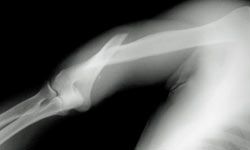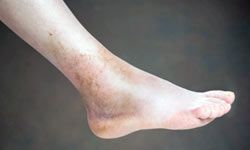With 206 bones in the human body and a world full of collisions, falls, slips, trips and mishaps, it's no wonder some of them get broken. And some bones -- by virtue of their locations in our bodies -- break more often than others.
When we're not busy finding new ways to fracture our bones, we should have a mix of awe and respect for our internal skeletal framework that prevents us from pooling up on the floor like jellyfish. Bones produce blood cells, protect our organs, shield our brain, help maintain calcium in our bodies, and form a complicated system of supports and levers that enable our muscles to move our bodies. Best yet, when they get fractured, bones immediately begin to heal themselves.
Advertisement
When bones break, they instantly begin depositing calcium at the site of the fracture. When healing is complete, bones end up just as strong as they were before the break. Additionally, when completely healed, the site of the previous fracture is no more or less likely to break than any other place on the bone.
Of course, some fractures are more conducive to self-healing than others. Such is the case with non-displaced fractures, in which the fractured parts of the bone remain in alignment. If you suffer a displaced fracture, both sides of the bone will need to be placed back into alignment before being set.
Here's to hoping your next fracture is a closed fracture. You'll know it's a closed fracture if you can't see a fractured bone sticking out of your skin (the dreaded open fracture). Upon fracturing, bones may fragment into several pieces -- known as a comminuted fracture -- or the bone may not break at all, but merely bend, as is the case with greenstick fractures (which are more common in kids).
With so many ways to break a bone, it's no wonder that some bones break more often than others. In this article, we'll learn about the five most commonly broken bones, some of which may have starring roles in your own personal medical history.


